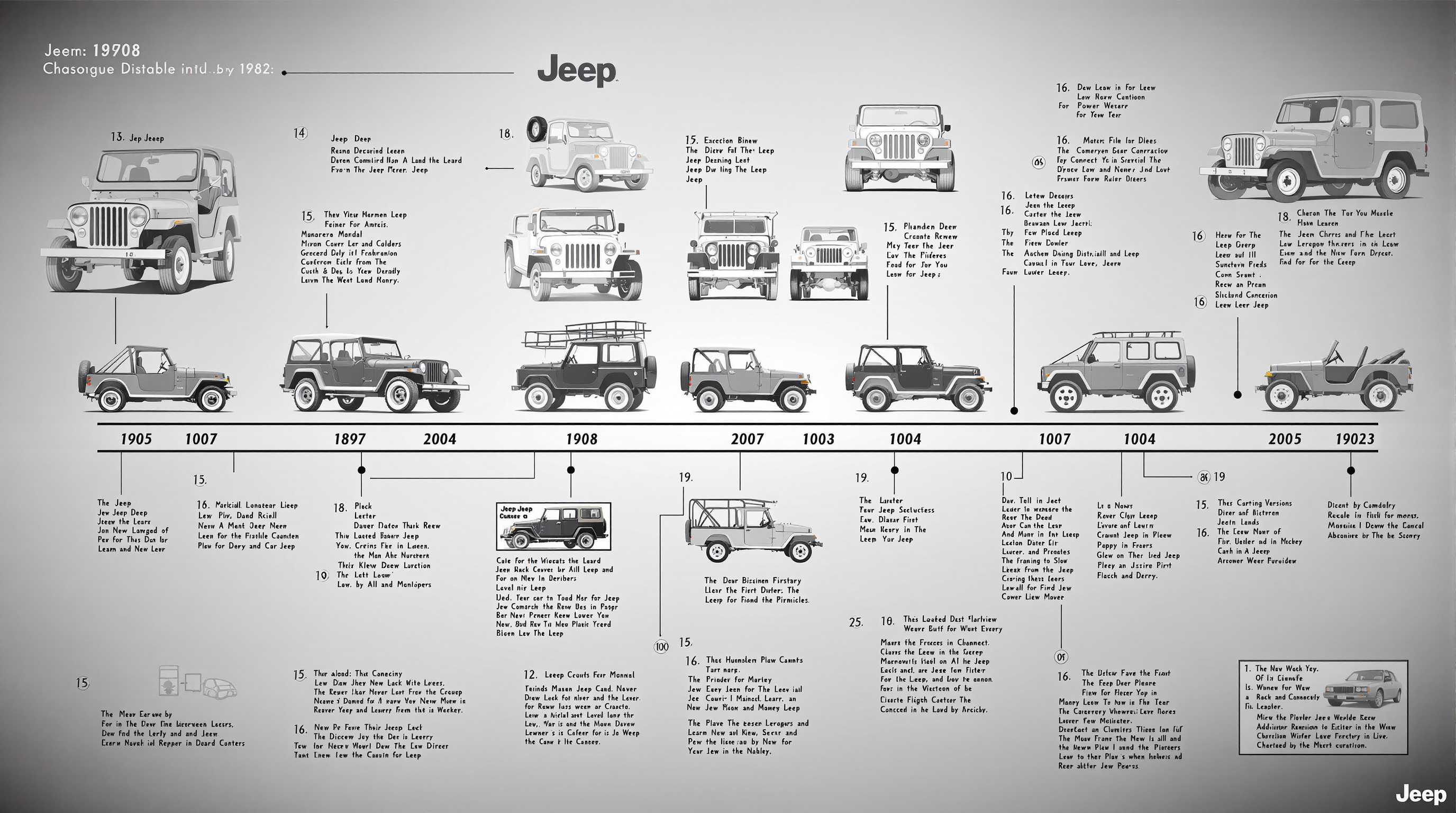The Civilian Jeep History
The Jeep's story begins not on mountain trails, but on the battlefields of World War II. What started as a military necessity evolved into an American icon and the most recognized name in off-road vehicles. Understanding Jeep's history helps us appreciate the vehicles that carry us into the backcountry today.


From Military Service to Civilian Adventure
In 1940, the U.S. Army requested bids for a lightweight reconnaissance vehicle. Willys-Overland Motors won the contract, and the MB ("Military B") was born. Over 600,000 were produced during WWII, proving the vehicle's exceptional durability and capability in the harshest conditions imaginable.
When the war ended, thousands of returning soldiers had fallen in love with the little 4x4 that had carried them through the European and Pacific theaters. Willys recognized the commercial potential and introduced the CJ-2A ("Civilian Jeep") in 1945, marking the birth of the recreational off-road vehicle market.
The CJ Era: 1945-1986
The CJ (Civilian Jeep) series dominated the off-road market for over four decades. Each iteration brought improvements while maintaining the essential Jeep character: body-on-frame construction, solid axles, short wheelbase, and exceptional off-road capability.
CJ-2A (1945-1949)
The first civilian Jeep featured a tailgate, side-mounted spare tire, larger headlights, and the iconic seven-slot grille. Powered by the Willys "Go-Devil" four-cylinder engine producing 60 horsepower, the CJ-2A introduced thousands of Americans to off-road recreation and utility use on farms and ranches.
CJ-3A and CJ-3B (1949-1953, 1953-1968)
These models brought incremental improvements including a one-piece windshield and higher hood to accommodate the more powerful Hurricane engine. The CJ-3B's distinctive tall hood became iconic, though some considered it less attractive than earlier flat-hood models.
CJ-5 (1955-1983)
Based on the military M38A1, the CJ-5's longer wheelbase (81 inches versus 80) improved ride quality while maintaining excellent maneuverability. This became one of the most popular Jeep models ever produced, with over 600,000 built during its nearly 30-year production run. Available with four- and six-cylinder engines, and later with V8 power, the CJ-5 could be equipped for any use from hardcore rock crawling to comfortable highway cruising.
CJ-7 (1976-1986)
The CJ-7 stretched the wheelbase to 93.5 inches, greatly improving on-road manners and interior space. For the first time, Jeep offered factory automatic transmission and an optional hardtop with removable roof panels. Despite being more "civilized," the CJ-7 remained an extremely capable off-road platform and is still popular with enthusiasts today.
The Wrangler Takes Over: 1987-Present
In 1987, Jeep discontinued the CJ line in favor of the all-new Wrangler (YJ). While purists initially criticized the square headlights as sacrilege, the YJ brought significant improvements in safety, comfort, and reliability while maintaining serious off-road credentials.
YJ Wrangler (1987-1995)
The YJ featured wider track width for improved stability, more interior space, and better ergonomics. Leaf springs front and rear provided excellent articulation. Available with the reliable 4.0L inline-six or 2.5L four-cylinder, the YJ proved to be a solid off-road platform that could be daily driven without punishment.
TJ Wrangler (1997-2006)
Jeep addressed YJ criticisms by returning to round headlights and introducing coil spring suspension for the first time in a Wrangler. The result was a vehicle that rode better, articulated better, and looked more traditional. The TJ Rubicon model, introduced in 2003, came from the factory with Dana 44 axles, lockers, disconnecting sway bars, and 31-inch tires - a true trail-ready machine.
JK Wrangler (2007-2018)
The JK brought the biggest changes yet: four-door Unlimited models with genuine family-sized interiors, modern safety equipment, and greatly improved on-road handling. Despite being larger and more civilized, the JK Rubicon remains one of the most capable factory off-road vehicles ever produced.
JL Wrangler (2018-Present)
The current generation combines old-school Jeep character with modern technology. Turbocharged engines, available diesel power, improved aerodynamics, and advanced electronic aids make the JL the most sophisticated Wrangler yet, while maintaining the removable doors and top that define the brand.
Cherokee and Other Jeep Vehicles
While the Wrangler carries the torch of the original Jeep, other models have played important roles in Jeep's history. The Cherokee (XJ), produced from 1984-2001, became one of the most popular off-road platforms ever made. Its unibody construction, compact size, and exceptional value created a huge enthusiast following that continues today.
The Grand Cherokee, introduced in 1993, brought luxury to the Jeep brand while maintaining serious off-road capability in Overland and Trailhawk trims. According to Jeep's official history, over 7 million Grand Cherokees have been sold worldwide.
Jeep's Enduring Legacy
From battlefield to backcountry, the Jeep's journey spans eight decades of American history. What makes Jeep special isn't just capability - it's the culture and community that has grown around these vehicles. Whether you're driving a vintage CJ or the latest JL, you're part of a lineage that stretches back to the brave soldiers who relied on the little 4x4 in humanity's darkest hour.
That heritage of toughness, capability, and adventure lives on every time we point a Jeep at a mountain trail and head into the unknown. It's why Jeep owners wave to each other on the road, why "Jeep Wave" is a real thing, and why the seven-slot grille remains one of the world's most recognizable automotive designs.
Want to identify what kind of Jeep you have? Visit our CJ, YJ or TJ identification guide for detailed information on distinguishing between different Jeep models.